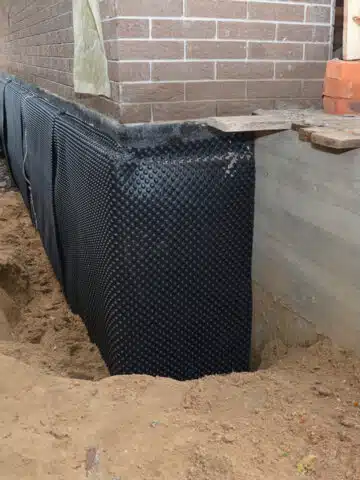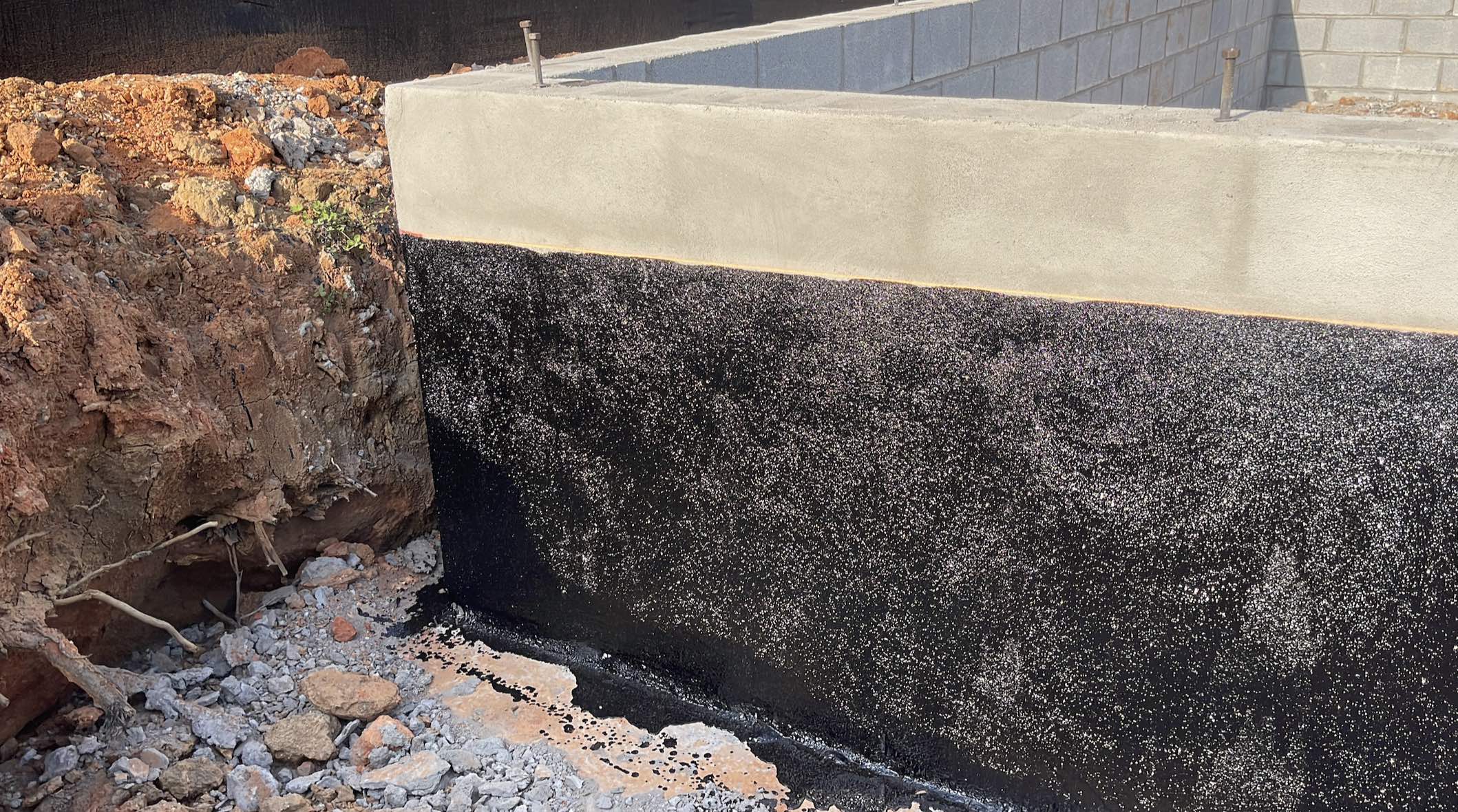Checking Out the Various Methods and Solutions for Effective Damp Proofing
Moisture in structures presents significant challenges to both architectural honesty and interior air high quality. Various techniques and options have emerged to battle this pervasive issue. From conventional damp-proof membranes to cutting-edge chemical treatments, each approach uses distinct advantages. Recognizing these alternatives is vital for effective dampness control. However, selecting the appropriate option relies on particular building conditions and needs, triggering further expedition right into one of the most efficient wet proofing strategies readily available.
Understanding the Causes of Dampness
Although wetness can emerge from different sources, comprehending these causes is crucial for efficient removal. Generally, dampness originates from three key resources: rising wet, penetrating moist, and condensation. Increasing wet happens when groundwater travels upwards with permeable materials, such as block or rock, commonly because of an absence of an effective barrier (damp specialist newcastle). Permeating moist is generally caused by exterior variables, consisting of roofing leaks, faulty gutters, or harmed wall surfaces, enabling water to infiltrate a residential or commercial property. Condensation, on the other hand, results from excess moisture airborne, frequently exacerbated by poor ventilation and temperature level distinctions, leading to water droplets basing on surface areas. Identifying these underlying concerns is necessary, as each kind of dampness requires a tailored method for removal. Proper evaluation aids in establishing one of the most reliable solutions, inevitably securing the architectural stability of a building and enhancing indoor air quality
Standard Damp-Proof Membranes

Chemical Damp-Proofing Solutions
Chemical damp-proofing remedies provide a cutting-edge technique to avoiding dampness intrusion in structures. These methods commonly involve the application of liquid chemicals that permeate masonry and develop a barrier versus increasing moist. Frequently used chemicals include silanes, siloxanes, and other water-repellent agents that react with surface products to produce a hydrophobic layer.The application process usually calls for drilling openings right into the wall surfaces, injecting the chemical solution, and permitting it to cure. This technique is particularly helpful for older structures where typical damp-proof membranes may be not practical. In addition, chemical damp-proofing can be much less turbulent and much more cost-effective than considerable restoration projects.While effective, these solutions depend on appropriate application and environmental problems for peak performance. Regular upkeep and tracking are vital to ensure the long life of the damp-proofing treatment. On the whole, chemical damp-proofing stands for a flexible alternative for securing buildings against moisture-related damage
Dental Caries Wall Surface Building Strategies
Tooth cavity wall building and construction strategies offer numerous benefits, specifically in moisture control and power efficiency. By including an air space between 2 layers of masonry, these wall surfaces properly alleviate water access while boosting insulation. This combination not only safeguards frameworks from dampness yet additionally contributes to lowered energy usage.
Advantages of Dental Caries Wall Surfaces
When thinking about reliable wet proofing approaches, the benefits of tooth cavity wall surfaces stick out plainly. Dental caries walls contain 2 different layers, creating an air gap that successfully decreases wetness penetration. This design decreases the danger of wetness, as the external wall surface functions as a barrier against rain and water ingress. Additionally, dental caries wall surfaces boost thermal insulation, which adds to energy effectiveness by decreasing heat loss. They additionally offer sound insulation, assisting to produce a quieter indoor atmosphere. The air gap enables for ventilation, which helps in moisture control and minimizes the probability of mold and mildew development. These advantages not just improve the overall comfort of a building however likewise add to its longevity and structural integrity.
Moisture Control Strategies
Efficient wetness control methods are critical in tooth cavity wall building to ensure long-term protection against wetness. One main method includes the incorporation of weep openings, which facilitate water drain from the tooth cavity, preventing build-up. Furthermore, making use of breathable membrane layers can aid take care of dampness levels while allowing entraped vapor to escape. Correct positioning of insulation is additionally critical, as it must not block drainage courses. Making certain that the external fallen leaves of the tooth cavity wall surface are constructed with waterproof materials enhances overall sturdiness. Routine upkeep checks are necessary to determine any type of blockages or damages early, securing the structure's stability. Inevitably, a mix of these techniques develops a robust protection versus moisture breach in cavity walls.
Insulation and Power Effectiveness
Insulation plays an essential duty in enhancing energy effectiveness within cavity wall surface building and construction. By including insulating materials, these wall surfaces create a thermal barrier that lessens warm loss and decreases power usage. Reliable insulation not only aids keep a secure interior temperature but also alleviates the threat of moisture, as it stops condensation within the wall surface cavity. Various methods, such as using stiff foam boards or mineral wool, can be employed to accomplish ideal insulation performance. In addition, appropriate installation is important to guarantee that gaps and spaces are decreased, which can or else endanger energy efficiency. Inevitably, a well-insulated tooth cavity wall contributes significantly to overall sustainability and decreases cooling and heating prices for home owners.
Outside Damp Proofing Methods
Outside damp proofing approaches are necessary for securing frameworks from moisture seepage. Two effective techniques consist of the application of water-proof membranes and the installment of French drains. These services help alleviate water buildup and protect the honesty of buildings.
Waterproof Membrane Application
While different techniques exist for stopping moisture access, the application of water resistant membranes continues to be a very effective outside damp proofing method. These membrane layers are commonly made from products such as polyethylene, rubber, or changed asphalt, giving a durable barrier click here against water infiltration. The setup process involves using the membrane layer to the exterior surfaces of walls or foundations, making certain complete protection to avoid leaks. Appropriate attachment and sealing at joints are critical to making the most of performance. Waterproof membrane layers can be used in numerous forms, consisting of fluid coverings and sheet membranes, permitting for adaptability based on the particular demands of the framework. This method not only safeguards buildings from moisture however additionally boosts their long life and architectural honesty.
French Drainpipe Installment
One reliable approach for taking care of groundwater and stopping dampness build-up around a building's foundation is the installation of a French drainpipe. This drain system includes a trench full of crushed rock and a perforated pipeline that reroutes surface area water far from the foundation. Appropriate setup needs cautious planning, making certain that the drainpipe inclines far from the structure to assist in ideal water flow. Additionally, the location of the drain is essential; it must be positioned in areas prone to merging or excess wetness. Regular maintenance, consisting of clearing up particles from the gravel and ensuring the pipeline stays unobstructed, is important for long-term performance. Inevitably, a well-installed French drain can considerably reduce the threat of water-related problems in basements and foundations.
Interior Waterproofing Approaches
Inside waterproofing techniques are crucial for shielding a building's inside from moisture seepage and potential water damages. These techniques normally involve the application of specialized materials and strategies developed to develop a wetness obstacle within the structure. One typical method is the usage of water resistant coverings or sealants on wall surfaces and floors, which protect against wetness from permeating surfaces.Additionally, installing indoor drainage systems, such as sump pumps, can successfully manage water buildup in basements and creep spaces. An additional technique entails making use of vapor obstacles, which are set up to hinder wetness activity from the ground right into living spaces.Moreover, resolving any fractures or spaces in wall surfaces or foundations with appropriate sealants ensures an extensive protection versus water intrusion. By carrying out these interior waterproofing methods, building owners can greatly minimize the danger of mold and mildew development, structural damage, and other moisture-related issues. Proper execution of these methods is crucial for lasting security and structure stability.
Routine Upkeep and Assessment Practices
Routine upkeep and assessment methods are crucial for ensuring the long-lasting performance of damp proofing solutions in any structure. Regular checks make it possible for property owners to recognize very early indications of wetness invasion, such as peeling paint, mold growth, and musty smells. These indications can indicate underlying problems that require immediate attention.Inspections ought to be carried out at the very least each year, concentrating on vulnerable locations like cellars, creep rooms, and outside wall surfaces. Throughout these evaluations, home proprietors need to examine sealers, drain systems, and air flow to validate they operate correctly.Additionally, preserving downspouts and seamless gutters is important, as clogged systems can bring about water build-up near the foundation. Carrying out a routine maintenance timetable, in addition to prompt repair services, can significantly prolong the lifespan of damp proofing measures and safeguard the architectural honesty of the building. Aggressive measures ultimately add to the total wellness and safety of the living environment.
Often Asked Concerns
How Long Does Damp Proofing Normally Last?
The duration of damp proofing effectiveness differs, commonly lasting between 20 to half a century. Aspects such as application quality, environmental problems, and upkeep practices considerably influence the longevity of the damp proofing treatment.

Can I Damp Evidence My Home Myself?
The specific pondered the expediency of do it yourself damp proofing. With correct research study and the best products, it is possible. They also identified the significance of specialist guidance to assure lasting performance and stop future concerns.
What Are the Indications of Inefficient Damp Proofing?
Indicators of inefficient wet proofing include consistent musty smells, noticeable mold development, peeling off paint, damp spots on wall surfaces, and timber decay - mould treatment newcastle. House owners should attend to these concerns without delay to avoid additional damages and health and wellness problems
Does Damp Proofing Affect Indoor Air Quality?

Just How Much Does Specialist Damp Proofing Price?
Professional damp proofing expenses vary substantially, typically ranging from $1,000 to $5,000 relying on the residential or commercial property's size, the level of the moist problem, and chosen approaches. Each scenario needs a tailored analysis for exact prices. Frequently, dampness originates from three key resources: rising wet, passing through moist, and condensation. When considering effective wet proofing techniques, the benefits of dental caries wall surfaces stand out prominently. External wet proofing techniques are important for safeguarding structures from dampness infiltration. While numerous techniques exist for stopping wetness ingress, the application of water-proof membrane layers remains a highly reliable exterior moist proofing technique. Indications of ineffective moist proofing include relentless stuffy odors, noticeable mold and mildew growth, peeling off paint, moist patches on wall surfaces, and wood decay.